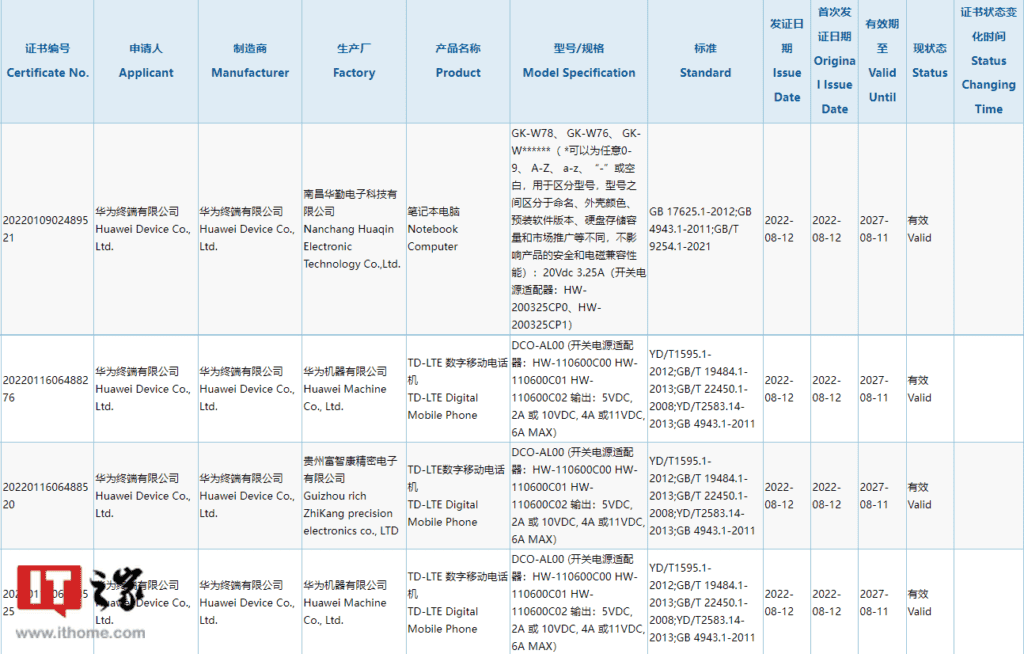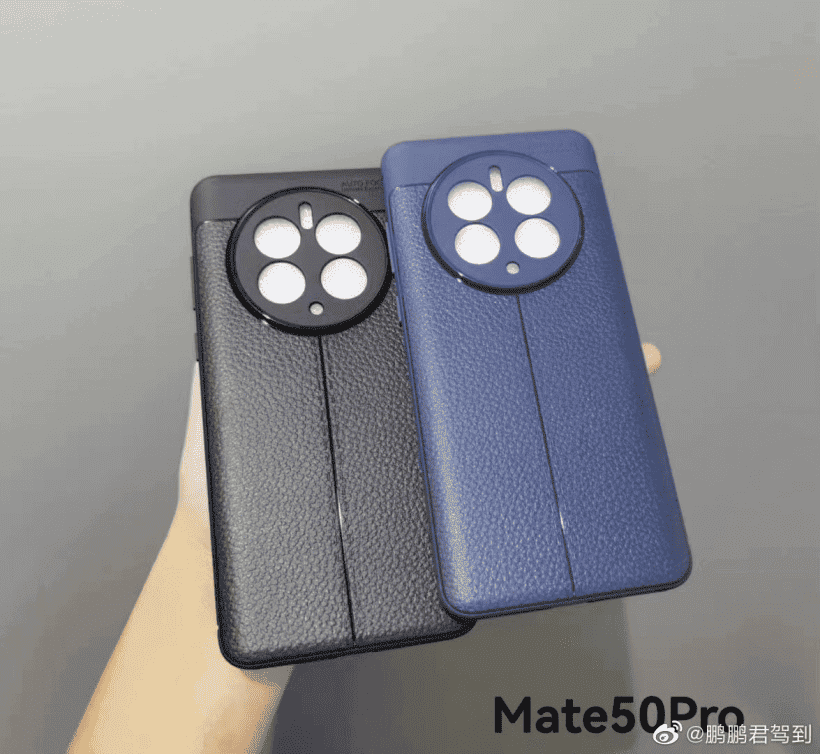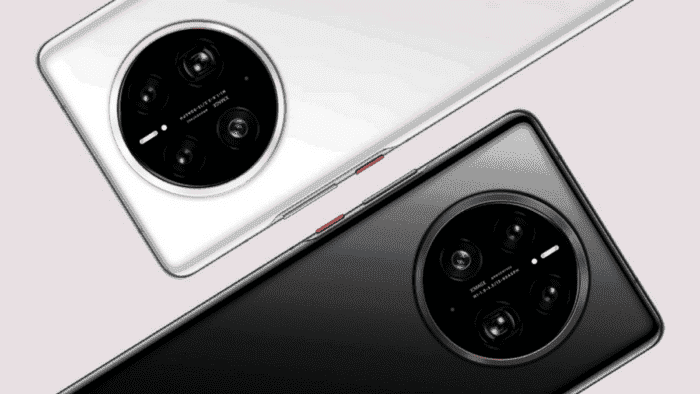Chinese manufacturing giant, Huawei is still working on smartphones despite its disadvantaged position in the market. The company has since said it no longer competes in the smartphone market. All Huawei wants now is to survive and still retain its smartphone brand. Last week, three models of the Huawei Mate 50 series (BNE-AL00, DCO-AL00, CET-AL00) passed the Ministry of Industry and Information Technology’s audit to enter the network. According to reports, these smartphones are the Huawei Mate 50, Huawei Mate 50 Pro and Huawei Mate 50 RS. Unfortunately, the specific details of these smartphones are not available in the certification.

Now, the standard version of Huawei Mate 50 has passed the Chinese 3C quality certification. The network model is DCO-AL00, which supports up to 66W wired charging. Furthermore, another Huawei device, GK-W* notebook computer also gets 3C certification. This device supports Huawei’s 65W fast charging. According to speculations, this new device will be the Huawei MateBook E.
From the 3C certification listing, all three devices support TD-LTE / LTE FDD / WCDMA / CDMA 1X / GSM standards. In addition, they all support dual-card dual-standby and they also come with Huawei’s internal HarmonyOS operating system. This also means that none of the three models supports 5G.
Huawei Mate 50 series to arrive in September
As of now, there is no official launch date for this new Huawei flagship series. However, there are already speculations regarding when the Huawei Mate 50 series will arrive. According to Weibo tech blogger, @wangzaibaishitong, Huawei will hold a new product launch conference for the Mate 50 series on September 7. At this event, there are expectations that the company will unveil the Huawei Mate 50e, Mate 50, Mate 50 Pro, and Mate 50 RS. In terms of processor, except the Mate 50e which comes with the Snapdragon 778G, all other series are uses SM8425 (Snapdragon 8 Gen 1). However, there are reports that this is only the 4G version of the Snapdragon 8 Gen 1 SoC.

According to previous revelations, the Huawei Mate 50 series will usher in an upgrade in imaging. The camera department will get some significant upgrades. In addition, this device will come with the Huawei HarmonyOS 3.0 system. The overall configuration is stronger than the P50 series, but it is still a 4G model. Among them, the Mate 50 Pro has a rear-mounted star ring camera module. On the front, it also supports face recognition to unlock the camera.
Huawei is already working on 6G network – says its a leap forward
At the 5G-A / 6G forum of the World 5G Conference, Wang Jun, vice president of Huawei’s wireless network product line and chief scientist of 6G, delivered a keynote speech. In his speech, he reveals the major target for the 6G network. According to him, 6G will cross the human connection, the Internet of things, and move towards the intelligent connection of all things. The definition of 6G is to increase intelligence and perception capabilities on the basis of the upgrade of the three major scenarios of 5G.
Typical application scenarios of 6G include: distributed networked machine learning and interconnected AI, perception, positioning and imaging, human-centred immersive communication, smart city and smart life, full-featured Industry 4.0 and its evolution, and mobile services worldwide cover.
In terms of spectrum, 6G will be a multi-layer spectrum. It uses a low-frequency band for basic coverage layer. There is also a mid-frequency band (new IF 7-15GHz) for capacity/coverage layer and a high-frequency band for extreme experience layer. On the whole, the mid-to-low frequency band is still the most economical way to achieve wide coverage. The millimeter wave frequency band is becoming mature in 6G, and perception is the new driving force. Also, the terahertz frequency band injects infinite possibilities for perception and communication.
“6G is not a simple upgrade of 5G, but a leap-forward improvement.” Wang Jun claims that 6G has six key technical directions: native intelligence, extreme connectivity, network perception, star-ground integration, native trustworthiness, and carbon neutrality.





